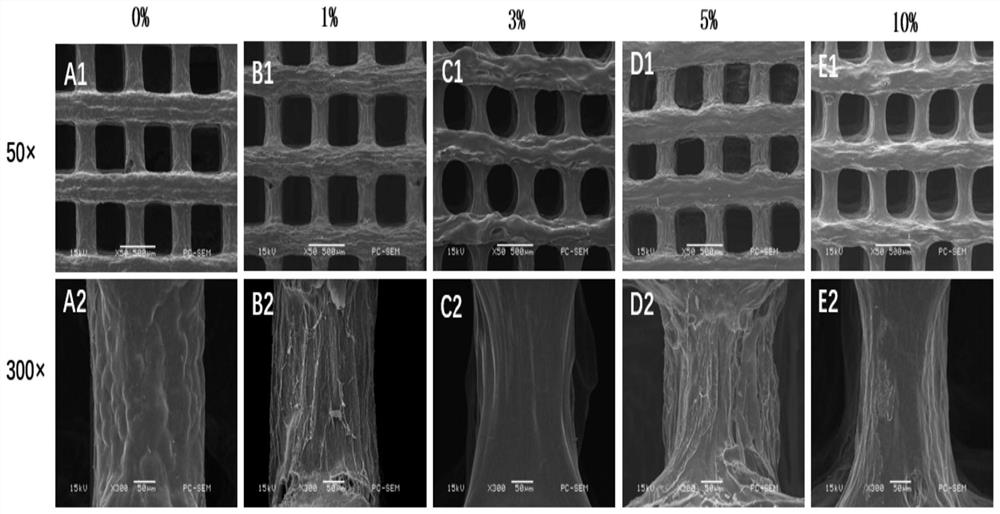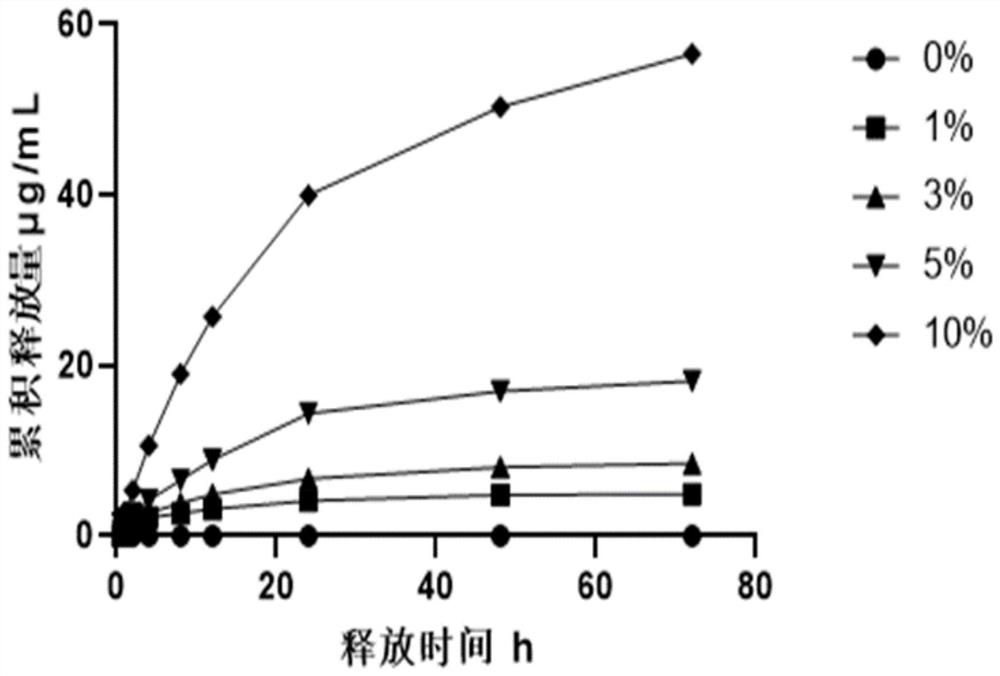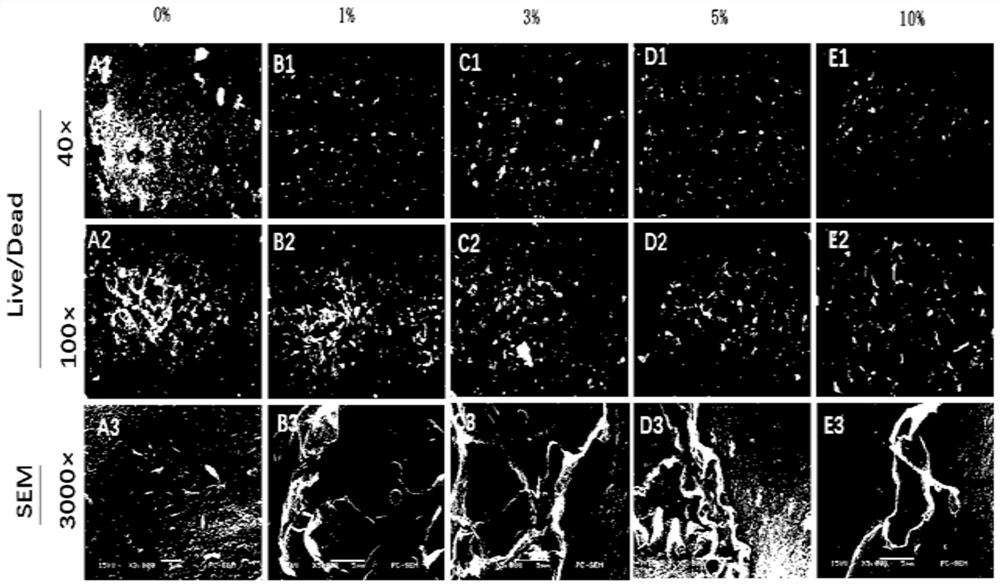Skin scaffold and preparation method thereof
A skin and alginate technology, applied in prosthesis, additive processing, medical science, etc., can solve the problems of anti-inflammation, analgesia, sedation, protection of cell activity and insufficient immune regulation, initial stage, etc., to achieve inhibition Inflammatory response, accelerated repair, and the effect of reducing the level of inflammatory factors
- Summary
- Abstract
- Description
- Claims
- Application Information
AI Technical Summary
Problems solved by technology
Method used
Image
Examples
Embodiment Construction
[0022] The present invention will now be described in further detail in conjunction with the accompanying drawings, which are simplified schematic diagrams, only schematically illustrating the basic structure of the present invention, and therefore only show the configurations related to the present invention.
[0023] First of all, since the alginate and gelatin used in the present invention are substances that have already been used, and paeoniflorin is a newly used traditional Chinese medicine component, in order to better illustrate the performance of skin scaffolds with different dosages of paeoniflorin, the following examples maintain The use weight of alginate and gelatin remains unchanged, so, taking five different amounts of paeoniflorin as a specific method, the percentages of the weight of paeoniflorin in the skin scaffold and the sum of the weights of alginate and gelatin are 0%, 1%, respectively. %, 3%, 5% and 10%, the example of 0% by weight is used as a comparati...
PUM
 Login to View More
Login to View More Abstract
Description
Claims
Application Information
 Login to View More
Login to View More - R&D
- Intellectual Property
- Life Sciences
- Materials
- Tech Scout
- Unparalleled Data Quality
- Higher Quality Content
- 60% Fewer Hallucinations
Browse by: Latest US Patents, China's latest patents, Technical Efficacy Thesaurus, Application Domain, Technology Topic, Popular Technical Reports.
© 2025 PatSnap. All rights reserved.Legal|Privacy policy|Modern Slavery Act Transparency Statement|Sitemap|About US| Contact US: help@patsnap.com



